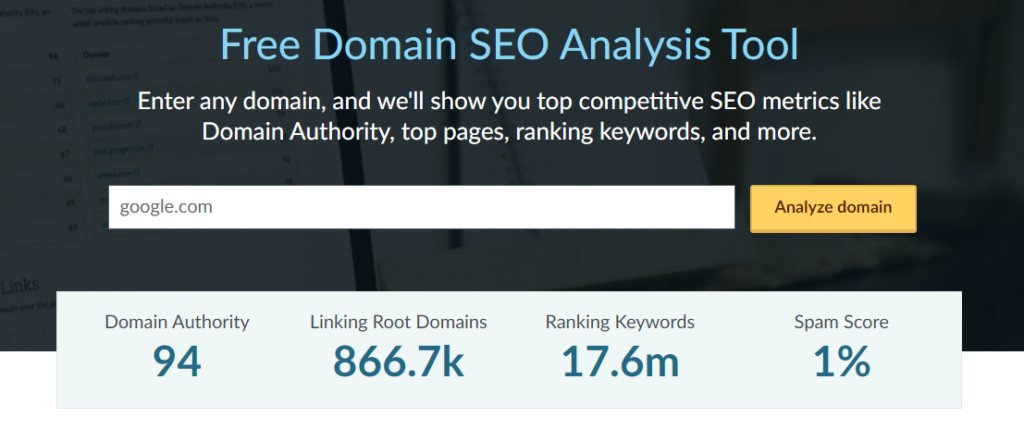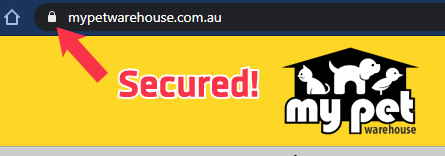Your site’s rankings on Google’s Search Engine Results Pages (SERPs) determine how much organic traffic you get. To get more traffic (and therefore sales), there are a number of tactics you can implement across your site. These range from the very easy to the more time-consuming, depending on your experience.
This guide details 14 different strategies and tactics that will ensure your page ranks higher than the competition and that your site’s traffic doesn’t drop. If it is dropping, then these tactics can also be used as a way to get back on top.
This guide can be used as a follow-on from our comprehensive guide to SEO.
1. Understand how Google’s ranking algorithm works
Before launching into the details of what to do, it’s important to understand why we need to do it.
Google updates its search algorithm daily. Outside of these regular updates, we also know how Google’s algorithm works by looking at major updates. Recent examples include the update which favored mobile-friendly sites over those that weren’t.
Thus, we need to always understand what Google prefers to see and at the very least, ensure we are delivering on each of the major updates. Here’s a useful and concise list where you can track all of these updates. Consistently optimizing your SEO strategy to adhere to these updates will ensure your search volume stays consistent.
To see how the algorithm changes, you should consistently check your metrics on Google Analytics. Notice a big change? It might have something to do with an update from Google, so it’s essential to stay updated.
Google’s most recent update is called the Page Experience Update update which brings these Core Web Vitals to the forefront:

Read more about the Page Experience Update and what it means for online retailers over here.
2. Create a backlink strategy
Backlinks are links that direct to your website from other sites. They are confirmation that your site is an authority on something and that it is worth looking at.
Generally, the more backlinks you have to your pages, the better. However, the quality of those backlinks is also very important. If spam-type sites are linking back to your site then that can negatively impact your rankings. Conversely, high-quality backlinks from authoritative sites can really improve your site’s score.
A good target to set for yourself when creating a backlink goal is to use a tool like Ahrefs to determine the “Domain Authority” of one of your main competitors (or you can use this great tool, which is free! 😉). If your rating is close to theirs, then you should be able to compete. If not, then there’s a number of different tactics to improve your domain authority rating, many of which are detailed in this guide.
There are many ways you can check your site’s Domain Authority (DA). You can also use Moz’s Link Explorer to the MozBar to add on to your browser. You can check your Domain Authority for free here. When you do, you’ll get something that looks like this:

As you can see, the amount of linking domains and the number of ranked keywords at key to getting a high score.
Getting backlinks usually means contacting sites and publications and offering them a mutual exchange of links. If that sounds like too much work, then focusing on creating relevant and original content will have you winning quality backlinks in no time. Here’s a guide to creating that complete content that will get you good backlinks.
Link building is a cornerstone of modern digital marketing and it’s how you build trust and authority for your site. Getting writers to write about your product or service and getting them placed on site’s with a high domain rating is a very effective strategy.
3. Create unique and original website content
Google penalizes sites that don’t adhere to what they deem to be an authoritative website. One of the most common penalties that websites experience is having duplicate content on their site – which usually indicates a spammy site. If Google detects duplicate content on the domain, it will direct less traffic there.
That is why it’s essential to create unique content with every web page or blog post you create. Every page on your website should feature quality content that has something unique to say. Having original content on every page will get you a high click-through rate across the board.
Here’s a simple rule to consider when crafting website content: Every page should have something new and original to say. If it doesn’t do that, cut it, as it could be doing more harm than good.
If you’re an online retailer, having a blog can be a great place to start writing lengthy content that doesn’t interfere with your product or category pages.
4. Have a mobile-friendly site
As we mentioned in the first point, one of the major Google updates was around mobile optimization. If your website is not mobile responsive or usable on mobile devices then you are at risk of losing traffic due to a lower ranking.
Mobile now accounts for approximately half of all global web traffic so Google’s mobile update makes sense from any angle. Users want a seamless experience if browsing your site on a desktop or device so you need to deliver this.
If your site isn’t mobile-friendly, you might be damaging your business in two major ways:
- Failing to serve at least half of your existing customers.
- Getting less organic traffic from both desktop and mobile Google searches.
So, bottom line: Having a mobile responsive website is absolutely essential.
Use Google’s Mobile-Friendly Test to see if your site is up to scratch.
Note: If you’re not seeing this message when using Google’s mobile test then your site needs some work.
5. Create a relevant keyword list
Your goal when making optimizations for SEO is to rank highly for target keywords which are likely to lead to sales. Firstly you’ll need to make a list of all the keywords or keyphrases which would indicate that a customer wants to buy your products.
Secondly, you’ll want to check what kind of traffic numbers each of these terms brings in with tools like SEMrush, Ahrefs, or Google’s Keyword Planner. You can get strong results from focusing on keywords that have a high volume of searches, but low competition. This is where you can find your niche and start driving more traffic.
This keyword list should form the backbone of your content creation strategy. Always refer back to this list and ensure you are including the best keywords in your titles, URLs, body text, etc.
You should also include long-tail keywords in your list. These are key phrases that are much more specific than your more general keywords, but they also need your attention as they can result in much higher conversion rates. The buyer intent is usually there when the searches get more detailed.
For much more on building your keyword list, check out our complete guide to SEO.
6. Write content around those keywords
Now that you have your list, you need to start using it. When using your keywords in web pages or posts it’s important to write naturally. Keyword stuffing is penalized by Google and can affect your site’s ranking, so avoid it.
Instead, try and use your keywords naturally. Read it out loud and if it sounds like the word is being shoehorned in, then it probably is. Look for synonyms of the keyword or words lower down the list that will make sense in their place.
Content built featuring these keywords heavily is how you optimize your on-page SEO and how your pages start ranking.
7. Create meta descriptions that boost clicks
Think of the meta description as a preview of what your page contains. If the preview isn’t attractive, customers won’t click on your site in the results pages.
Your meta description is where a user decides whether to click or not so writing a compelling preview will boost your clicks. Place your most sought-after keywords in the meta description for the best results.
Remember that the keywords in the meta description which align with the searcher’s query will be highlighted in bold.
In the above example, I searched for “green t-shirts” and you can see it is highlighted in the meta descriptions in the search results. This kind of optimization means more clicks and more sales.
There’s much more about setting meta description in our Complete Guide to SEO for E-commerce.
8. Create longer cornerstone content
Rather than having multiple short pages or posts that say roughly the same thing, the real value is in having longer pieces of content that will be shared or linked to. This is called cornerstone content and it’s something Google loves.
Writing content of a sufficient length should be a key part of your content strategy. If you’re struggling for resources to actually write content, it’s worth considering guest posts from either customers, brand advocates, or freelance writers.
If you’re in the B2B space, case studies make for great long longer forms of content marketing.
9. Start a blog and write consistently
Blogging is vital to online success and will bring you new and relevant traffic. Websites with blogs have 97% more indexed links.
Indexed links mean your business can be more effectively crawled by Google and will start to show your site more in relevant search results pages. Blogging is a long-term strategy as it will start to deliver more traffic to your site over time. But as with any of the tactics, the earlier you start, the better.
Blogs can be a really effective way to communicate more with your customer base. Seasonal shopping guides, staff selections, or product showcases are particularly effective examples that an e-commerce business could write about.
Having new blogs to share will also give you content you can promote via you social media channels or in your email campaigns.
Remember, each blog post should adhere to the previous points of being original, quality, and of a sufficient length.
10. Make sure your content is readable
Content needs to be readable if you want people to stay on your page. You don’t want to write scholarly articles to keep readers engaged, as most people don’t want to read that style of content.
Use the principles of clean and simple design in your writing too. Focus on high readability and alternate between short, medium, and long sentences. Amazon’s email template was leaked recently and its content is a great resource for how to write any type of online content.
Here are some other quick tips for how to format your content with readability:
- Use bullet points
- Include headings and sub-headings
- Vary sentence length (with favor towards short)
- Use simple words
- Use an active voice over a passive voice
11. Secure your site with HTTPS
Having a secure site is essential nowadays and has been a factor in Google’s rankings since 2014. If you don’t have HTTPS in your URL, then your site is not secure, and will thus receive less search traffic from Google.

SSL certificates ensure your site stays secure and reassures customers that your site is safe to give things like credit card information. If you don’t have an SSL cert and would like HTTPS appearing before your store’s URL, then get in touch soon!
12. Optimize your page titles and URLs
With your earlier keyword research to hand, you can now properly optimize your page titles and URLs. It’s good practice to make sure your page title and URL both contain the keyword that will bring you the most traffic.
The title and the URL is the first place Google will look to understand what your page is about. If they see that keyword, then great. You’re about to get some relevant traffic.
Be specific to your target audience and don’t be generic with something like “product” in your title/URL as that could mean any kind of product.
13. Use outbound links (and make sure they work)
When creating content, it’s important to use sources and references where possible. You might think directing traffic away from your site is something you definitely don’t want to do, right?
But using outbound links in your content sends a signal to Google that you are an authoritative site that is associated with other authoritative sources. It thus creates a network of interconnected sites that Google rewards for referencing each other.
Think of it like an academic article where it gets more popular according to the number of other papers that reference it. Start referring to other sites that you like or are associated with, and your organic rankings will see the benefits.
Always check and re-check that the links you’re linking to still work. Google doesn’t like broken links and you can be penalized for continuously linking to broken links.
14. Remember to set your alt tags
ALT tags are set to specify alternative text to display instead of images where the images can’t be rendered – this is useful for people with visual impairments who use a screen reader to view websites.
ALT tags are another place where Google will read content from your page in order to determine rankings, so putting your keywords in your tags can also result in better rankings. Everything on your site is crawled by Google to determine your site’s relevance – ALT tags are just another location to make your site more visible.
Conclusion
Ranking organically for keywords, particularly for e-commerce sites, can make a real difference to your business in terms of traffic and sales. However, it’s also constantly changing and needs regular attention.
It all begins with creating original and useful content that features the keywords that you want to rank for. Combining an effective e-commerce site with a regularly updated blog can be a very effective combo for owning your share of the traffic and sales.
For WebSell retailers, we offer an SEO optimization service to make sure you’re getting all the organic traffic you need. Contact us to book your FREE initial SEO consultation.
Here’s some more SEO-related articles if you want do an even deeper dive into your store’s SEO:
E-commerce SEO: The Complete Guide (2024)
Mastering SEO-Optimized Product Descriptions for E-commerce
How to Improve Your Organic Search Results in 14 Steps
How to Create the “Complete Content” That Google Loves
Get the latest e-commerce tips and news
-

Last-Minute Holiday Prep for Your WebStore
The holiday shopping season is here, and with Black Friday, Cyber Monday, and the festive season around the corner, e-commerce stores must be ready for the rush. If you haven’t started preparing yet, don’t worry—there’s still time to make impactful changes. Here are some actionable tips to ensure your webstore is ready to attract customers,…
-

Boost Your Business with Dynamics 365 and E-Commerce Integration
In the current digital era, businesses face the dual challenge of meeting escalating customer expectations while managing extensive inventory and facilitating seamless transactions across diverse sales channels. For organizations leveraging Microsoft Dynamics 365 Business Central as their Enterprise Resource Planning (ERP) system, the integration with an e-commerce platform can be a transformative strategy. This integration…
-

Why WebSell is Your Leading B2B and Wholesale E-Commerce Platform
B2B and wholesale businesses need more than just a standard e-commerce solution to stay competitive. They need a robust platform. This platform must handle the unique complexities of business-to-business transactions, including custom pricing and bulk ordering. It also should offer seamless integration and advanced account management. That’s where WebSell shines as a leading B2B e-commerce…